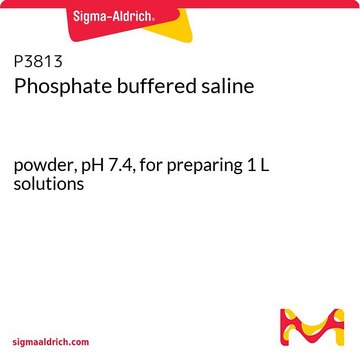S7757
Sodium thiocyanate
reagent grade, 98-102% (titration)
Sinónimos:
Sodium isothiocyanate, Sodium rhodanate, Sodium rhodanide, Sodium sulfocyanate
About This Item
Productos recomendados
grado
reagent grade
Análisis
98-102% (titration)
formulario
powder
pH
4.8 (20.1 °C, 1070 g/L)
mp
287 °C (dec.) (lit.)
cadena SMILES
[Na]SC#N
InChI
1S/CHNS.Na/c2-1-3;/h3H;/q;+1/p-1
Clave InChI
VGTPCRGMBIAPIM-UHFFFAOYSA-M
¿Está buscando productos similares? Visita Guía de comparación de productos
Aplicación
- Effect of Sodium Thiocyanate and Sodium Perchlorate on Poly(N-isopropylacrylamide) Collapse: This research investigates the effects of sodium thiocyanate on the collapse of poly(N-isopropylacrylamide). The study provides insights into the molecular interactions and thermodynamic behavior of this polymer in the presence of thiocyanate ions (Pica & Graziano, 2020).
Palabra de señalización
Danger
Frases de peligro
Clasificaciones de peligro
Acute Tox. 4 Dermal - Acute Tox. 4 Inhalation - Acute Tox. 4 Oral - Aquatic Chronic 3 - Eye Dam. 1
Riesgos supl.
Código de clase de almacenamiento
13 - Non Combustible Solids
Clase de riesgo para el agua (WGK)
WGK 1
Punto de inflamabilidad (°F)
Not applicable
Punto de inflamabilidad (°C)
Not applicable
Certificados de análisis (COA)
Busque Certificados de análisis (COA) introduciendo el número de lote del producto. Los números de lote se encuentran en la etiqueta del producto después de las palabras «Lot» o «Batch»
¿Ya tiene este producto?
Encuentre la documentación para los productos que ha comprado recientemente en la Biblioteca de documentos.
Los clientes también vieron
Nuestro equipo de científicos tiene experiencia en todas las áreas de investigación: Ciencias de la vida, Ciencia de los materiales, Síntesis química, Cromatografía, Analítica y muchas otras.
Póngase en contacto con el Servicio técnico









